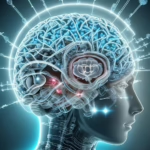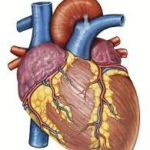Breaking Down the Body: The Role of Catabolism in Human Anatomy
Introduction
In the grand symphony of human biology, catabolism plays a crucial yet often overlooked role. As a fundamental aspect of metabolism, catabolism encompasses the processes through which the body breaks down macromolecules, transforming them into energy and smaller components necessary for physiological functioning. This article aims to delve deep into the processes of catabolism, its significance in human anatomy, and the interplay it has with anabolism—the construction phase of metabolism.
Understanding Metabolism: An Overview
Metabolism can be bifurcated into two primary categories: catabolism and anabolism. While catabolism involves the breakdown of complex molecules into simpler ones, releasing energy in the process, anabolism is responsible for building cellular structures and synthesizing new compounds. The balance between these two processes is critical for maintaining homeostasis within the body.
The Catabolic Process: From Molecules to Energy
Catabolism begins at the cellular level, where complex carbohydrates, proteins, and fats are broken down into their constituent parts: glucose, amino acids, and fatty acids, respectively. This transformation releases energy that is captured in the form of adenosine triphosphate (ATP), the energy currency of the cell.
Glycolysis: The Breakdown of Glucose
Glycolysis serves as the initial pathway for the catabolism of glucose. This anaerobic process occurs in the cytoplasm and involves a series of ten enzymatic reactions, breaking one molecule of glucose into two molecules of pyruvate. The energy yield from glycolysis includes a net gain of two ATP molecules and two molecules of nicotinamide adenine dinucleotide (NADH), crucial for subsequent energy production mechanisms.
The Krebs Cycle: An Aerobic Catabolic Pathway
Following glycolysis, if oxygen is available, pyruvate enters the mitochondria and is converted into acetyl-CoA, which then enters the Krebs cycle (also known as the citric acid cycle). This cycle occurs in the mitochondrial matrix and completes the oxidation of glucose-derived carbon compounds. It generates several high-energy electron carriers (NADH and FADH2) and a small amount of ATP directly.
Oxidative Phosphorylation: Energy Production at its Peak
The high-energy electron carriers produced from glycolysis and the Krebs cycle feed into the electron transport chain, a series of proteins embedded in the inner mitochondrial membrane. This process, termed oxidative phosphorylation, is responsible for the bulk of ATP generation during catabolism. Electrons are transferred through the chain, ultimately combining with oxygen to form water, while protons are pumped across the membrane, creating an electrochemical gradient that drives ATP synthesis.
Protein Catabolism: Breaking Down the Building Blocks
While carbohydrates are often the primary source of energy, the human body can also utilize proteins when necessary. Protein catabolism involves the deamination of amino acids, which removes the amino group, allowing the carbon skeleton to be converted into various intermediates that can enter the Krebs cycle.
-
Amino Acid Catabolism: Amino acids are categorized based on their carbon skeletons. Glucogenic amino acids can be converted into glucose, while ketogenic amino acids can produce ketone bodies. The body carefully regulates this process, especially during fasting or prolonged exercise.
- Role in Muscle Metabolism: During periods of high energy demand, such as intense physical activity, muscle tissue may rely on protein catabolism to provide additional energy. This adaptive mechanism illustrates the dynamic balance between catabolism and anabolism, particularly in muscle repair and growth.
Lipid Catabolism: The Role of Fatty Acids
Fats serve as a concentrated energy source and play a pivotal role in catabolism. Lipid catabolism begins with lipolysis, the process of breaking down triglycerides into glycerol and free fatty acids. Glycerol can be converted into intermediates for gluconeogenesis, while fatty acids undergo β-oxidation.
- β-Oxidation: Fatty acids are transported into the mitochondria, where they undergo successive cycles of oxidation, generating acetyl-CoA. Each cycle yields NADH and FADH2, which enter the electron transport chain, amplifying ATP production. This process is particularly significant during periods of fasting or prolonged exercise, showcasing fat’s essential role as an energy reservoir.
The Interplay Between Catabolism and Anabolism
Homeostasis and Energy Balance
The body finely tunes its catabolic and anabolic processes to maintain energy homeostasis. Hormones such as insulin, glucagon, and cortisol play critical roles in regulating these metabolic pathways, ensuring that energy production meets the body’s varying demands. Understanding this balance is key to addressing metabolic disorders such as obesity and diabetes.
Catabolism in Health and Disease
-
Role in Weight Management: An imbalance favoring catabolism can lead to unintended weight loss, while excessive anabolism can lead to obesity. Understanding the regulatory mechanisms of these processes allows for targeted strategies in weight management and metabolic health.
- Catabolic Disorders: Certain genetic disorders, such as phenylketonuria (PKU), impact the body’s ability to catabolize specific amino acids, leading to serious health implications. Studying these conditions highlights the vital role that catabolic processes play in overall health.
The Impact of Catabolism on Physical Performance
The balance between catabolism and anabolism is crucial for athletes and individuals engaged in regular physical activity.
Energy Systems During Exercise
During exercise, the body’s energy demands fluctuate, and different catabolic pathways are utilized based on the intensity and duration of the activity.
-
Anaerobic vs. Aerobic Metabolism: Short bursts of high-intensity exercise rely on anaerobic metabolism, predominantly glycolysis, for immediate ATP production. Conversely, sustained, lower-intensity activities primarily rely on aerobic metabolism, engaging lipid catabolism.
- Recovery and Muscle Repair: Post-exercise, the body shifts to anabolic processes to repair muscle damage and replenish energy stores. This delicate balance illustrates how catabolism not only provides energy but also sets the stage for recovery and growth.
Nutrition’s Role in Optimizing Catabolic Processes
-
Macronutrient Ratios: Athletes often manipulate their macronutrient ratios to optimize performance. Adequate protein intake is essential for muscle recovery, while carbohydrates fuel catabolic processes during exercise.
- Supplementation and Recovery: Various supplements, such as branched-chain amino acids (BCAAs) and creatine, have been shown to influence catabolic pathways, promoting recovery and enhancing performance.
Conclusion
Catabolism is not merely a process of breaking down molecules; it is the foundation upon which energy production, cellular maintenance, and overall health rest. Understanding the intricacies of catabolic pathways enables us to appreciate their integral role in human anatomy and physiology. By harnessing this knowledge, we can optimize health, enhance physical performance, and develop strategies to combat metabolic diseases.
Footnotes
- Berg, J. M., Tymoczko, J. L., & Stryer, L. (2015). Biochemistry. W.H. Freeman and Company.
- Hall, S. R., et al. (2000). "Catabolism and Muscle-Wasting: A New Paradigm." American Journal of Clinical Nutrition, 71(1), 213-219.
- O’Reilly, C. E., et al. (2014). "The Higher the Protein Intake: The Higher the Muscle Mass?" Obesity Reviews, 15(2), 100-106.
- Jäger, R., et al. (2017). "International Society of Sports Nutrition Position Stand: Protein. Nutrients, 9(1), 70."
- Lichtenstein, A. H., & Ludwig, D. S. (2010). "Understanding the Controversy over Dietary Fat and Heart Disease." Nutrition Reviews, 68(9), 466-487.


























Add Comment